
ROSSLYN CHAPEL - ITS WONDROUS AND MYSTERIOUS INTERIOR continued...
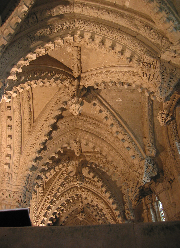
A MUSICAL MYSTERY?
Click on the sheet of music to your right to listen to a sample of the ‘Requiem from the Rosslyn Motet’ created by Edinburgh composer Stuart Mitchell who thinks he has cracked one part of Rosslyn’s musical mystery.
He believes that the ornate ceiling of carved arches, featuring 213 decorated cubes holds a code for medieval music. His father Thomas Mitchell spent 20 years cracking this code in the ceiling and now Stuart is orchestrating the findings for this new recording.
The breakthrough to interpreting the notation came when Mitchell's father discovered that the markings carved on the face of the cubes seem to match a phenomenon called Cymatics or Chladni patterns. Chladni patterns form when a sustained note is used to vibrate a sheet of metal covered in powder producing marks. The frequency used dictates the shape of the pattern, for example; the musical note A below middle C vibrates at 440 KHz and produces a shape that looks like a rhombus. Different notes can produce various shapes including flowers, diamonds and hexagons - shapes all present on the Rosslyn cubes. Stuart Mitchell believes this is "beyond coincidence" and has assigned a note to each cube.
Mitchell doesn't believe that the notes were carved there simply to record a piece of music. He hopes that the repeated frequencies in the music will resonate within the building and unlock a medieval secret.
"Hopefully, knowing masons of this period of time were aware of the acoustic properties and the effect of resonance upon stone, we're hoping something falls loose… it's like a safe. This is why we think he [St Clair] has gone to so much trouble."
To read more about Stuart Mitchell and his project please go to his website www.stuart-mitchell.com
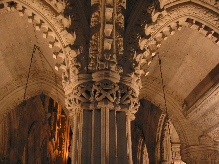
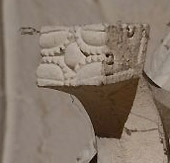
Interestingly the Devil's Chord - diabolus in musica - makes an appearance in the music.
"In the ceiling is this jump of an augmented fourth, in fact it opens up with an augmented fourth," says Mitchell. The Catholic Church had banned this interval (seven semitones) from medieval music as it was believed to be disturbing and therefore diabolical. Perhaps St Clair was indeed challenging the authority of the church.
Excerpts from ‘Tune into the Da Vinci Coda’ by Leighton Bruce - www.scotsman.com
ROSSLYN FAREWELL - MY LAST NIGHT MAY 22, 2006
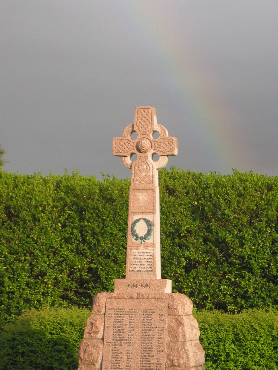
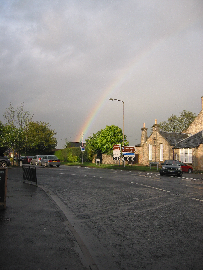
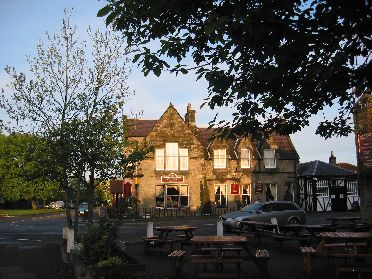
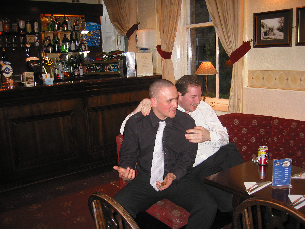
On my last night at the Roslin Glen Hotel, I looked up from the menu and saw this magnificent rainbow! I earned my nickname ‘the crazy canadian’ as I dashed away from my table, and grabbed my camera. Amazingly enough, one of the ‘ends’ was directly positioned on top of where I stayed - the Turner’s B&B!
I had three wonderful evening meals here at the Rosln Glen Hotel but sadly they do not have a wireless Internet connection. In fact no one in the area does! Dave the Manager told me that the Swallow Group <which owns the hotel> can not see the need for putting in net connections at all which IMHO is precisely why the Da Vinci Code film crew did not stay there!
One end of the Rainbow over Turner’s B&B
Roslin Glen Hotel
The ‘boys’ having fun - Kevin <white tie>my Maitre D and Dave the Manager
England and the Elizabeth Rose Narrowboat